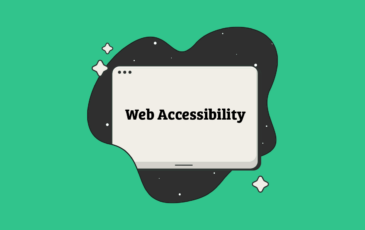 Article
Article
Ready for a website redesign? Start with the content
Before you pick out the first color, font or photo for your website redesign, you need to take a hard look at the content. A successful website starts with the content first and then the design.
This concept is just as important when it comes to website redesigns. If you are looking to redesign a website, it’s likely that the existing content strategy and visuals have been around for a while. Chances are that something’s not working, which has prompted the redesign.
Creating the right types of content and using this information to create the new design, can provide insight into how the redesigned website should look, feel and work for users. It can be a key indicator as to what types of elements the design needs to include, and how content will lead users to convert and complete the action that is the goal of the design.
Here’s a guide for how to map out a content strategy that will take you through a redesign.
Conduct an audit

What content comes with the old website design to the new one?
You might be surprised after a dive into the analytics. Pages that aren’t garnering a lot of traffic might not be necessary, or you might wish to merge content that’s on multiple pages.
If there are pages that are vital to the messaging of the website and not getting traffic, this is a good time to rethink them. Why is the content not converting users?
Before you can audit the content, you need to gather it all up. A content audit might include more than just the pages that are part of the existing website design. Make sure to think about the following:
- Existing website pages and sections
- What types of content are used (and are they still relevant?)
- A list of files and documents that are linked and downloadable throughout the design
- What the new content model will look like in relationship to the current structure
- A reference guide to organize existing content and create new content in the right style and voice
A strong audit will pick apart each of these content elements and put everything into one of three “buckets” for the redesign:
- Content is working well and moves to the redesign as is
- Content is not working or not part of the new content strategy and will get left behind (deleted)
- Content needs revisions or to be merged with other content
Evaluate content needs
What has changed about your company or mission since the website was launched? What changes need to be reflected in the redesign?
While these questions seem rather simple, the answers can find deep-rooted flaws that can be corrected in a redesign. Look for photos that are out of date, product lines that no longer exist, employee directories that are out of date or links that don’t work anymore.
Consider any industry changes that have occurred as well. Is the language that defines your industry the same? Do images and colors accurately represent your brand?
A redesign is a perfect time to put everything out in the open and look at content with a fresh eye, while making a list of content needs for the new design. What elements need to be created or added to the website?
Create the “right” kind of content

Finding the right, or wrong, type of content for a website can be tricky. What works for one design might ruin another. Simply, the right kind of content leads each user to complete an action that accomplishes your goal.
Start by defining goals to create the “right” kind of content.
Then consider the different types of content you can create to meet these goals:
- Images and video
- Short text blocks
- Static pages (about, contact, FAQ)
- Blog posts
- Evergreen content (articles or posts that never get old)
- UI elements, buttons and forms that encourage user action
Think in conversion paths: When User A performs an action or clicks a button, what happens next and how does that help them reach the goal of the website?
Creating a successful conversion path has a process of its own.
- Start with a conversion goal, such as buying a product, and identify user types that can reach that goal.
- Create a landing page for users to start the journey toward this conversion, such as a page just for a featured product.
- Use tools such as social media or advertising to drive users to this page.
- Create additional content related to this landing page, so that any off-page, internal links are still directing users toward the goal.
- Ensure that all actions loop the user back toward the goal. Keep repeating the loop until the user converts.
Optimize it

Don’t lose your search ranking with a redesign. Knowing where traffic comes from and how users enter your current website can ensure that the same pages will remain popular after a redesign.
While all new content will need to be optimized for search, you want to protect existing content as well.
- Take note of most searched, and found pages
- Develop a redirect strategy for any links or pages that will change or be removed in the redesign
- Focus on one keyword per page in the website redesign, optimize existing and new pages with this in mind
Develop a post-launch strategy
How will you maintain this newfound content strategy?
Develop a plan for how to continue managing new and existing content after the redesign launches.
- Who is in charge of content?
- How often will new pages/posts/updates be made?
- Is there a style guide or design documentation to ensure consistency?
- What is the style and voice for content moving forward? How is it different or similar to the previous website?
Conclusion
The most common problem with a website redesign is that it is often wanted right now. A redesign project can require as much research and information gathering and production as a new build if you want to do it right.
Set this expectation up front. Set new goals. Evaluate user interactions so that the new design is made to increase conversions and meet goals.
Then start thinking about all the visual pieces. You’ll end up with a more well-rounded design that will likely have a longer usable life as well.



